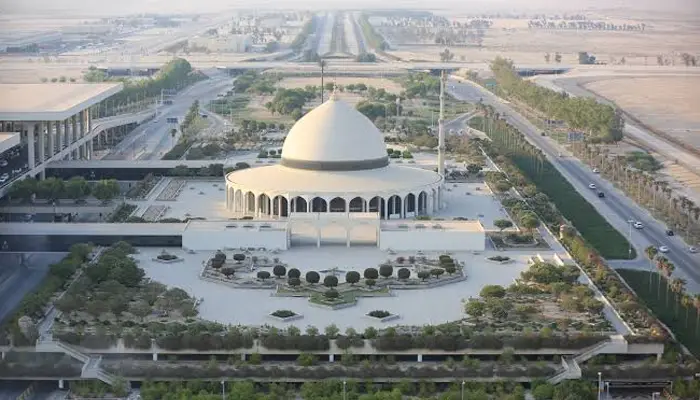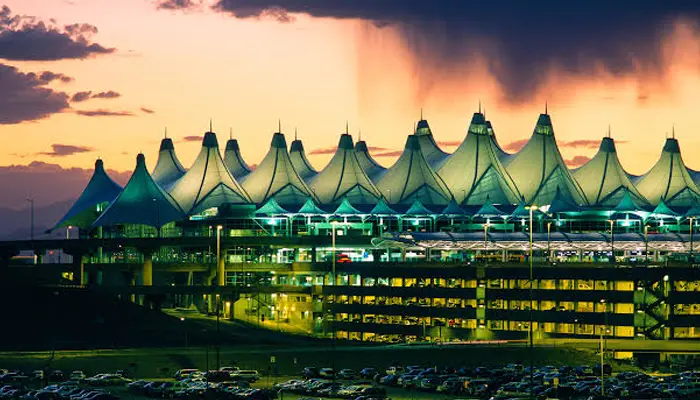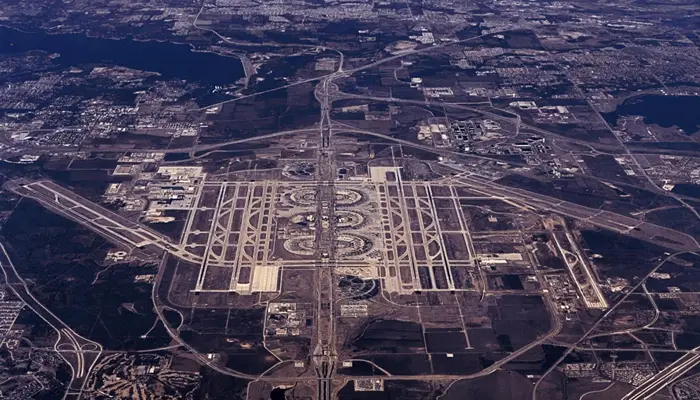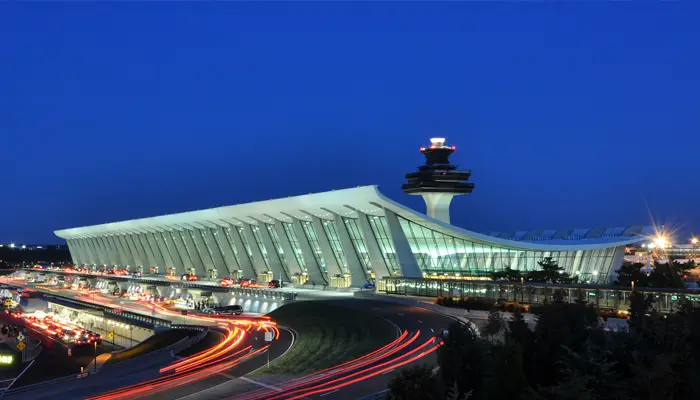Unveiling the World's Largest Airport Terminals Amidst the the Making of Dubai's Aviation Giant
- Admin
- 1 year ago
- 4 minutes read

Dubai's aviation scene heralds exciting news as plans emerge for the forthcoming passenger terminals at Al Maktoum International Airport. Given the green light by the government under Sheikh Mohammed bin Rashid al-Maktoum's leadership, these blueprints pledge an extraordinary capacity to host a staggering 260 million travelers each year. Outshining the bustling Dubai International Airport, the new terminal dwarfs its forerunner, boasting a size five times larger. This expansion cements Dubai's reputation as a paramount global aviation hub, primed to embrace an influx of visitors and ensure smooth travel experiences for generations to come.
In light of this context, let's delve into the world's most expansive airport terminals, akin in size to bustling cities.
King Fahd International

King Fahd International Airport stands as a beacon of progress in air travel, reshaping the region's aviation landscape through expansion and innovation. Serving as a pivotal hub for both domestic and international flights, it fosters global connectivity. Equipped with two parallel runways and a cutting-edge air traffic control system, the airport ensures smooth operations. Prioritizing passenger comfort, it offers contemporary amenities and services, enhancing the overall travel experience. Situated strategically in Saudi Arabia’s Eastern Province, its significance as a gateway for both business and leisure travelers is undeniable. King Fahd International Airport embodies excellence in aviation infrastructure and service delivery.
Denver International

Denver International Airport (DEN) stands as a pivotal hub in the United States, boasting modern aviation marvels. Operating since 1995, it spans 135 square kilometers, ranking as the world's second-largest airport. Nestled in Denver, Colorado, it serves as a crucial link for passengers globally. With six runways, it consistently ranks among the busiest in the nation, facilitating millions of travelers yearly. The distinctive tent-shaped roof mirrors the Rockies' grandeur, while inside, visitors enjoy diverse amenities, including eateries, shops, and captivating art displays. Vital for business and tourism, DEN drives economic prosperity, continually expanding to meet escalating travel demands. Embracing sustainability, it champions eco-friendly initiatives like extensive solar panel installations and green building practices.
Dallas/Fort Worth International

Dallas/Fort Worth International Airport (DFW) stands as a vibrant aviation hub within the Dallas-Fort Worth metroplex, Texas. Established in 1974, DFW has evolved into one of the world’s busiest and expansive airports, sprawling over 69.6 square kilometers, ranking as the third largest globally. Boasting five terminals and seven runways, its infrastructure efficiently facilitates air travel, serving as a crucial nexus for domestic and international flights. DFW commits to enhancing the traveler experience, offering an extensive range of amenities including retail outlets, dining venues, and services tailored to both leisure and business needs. Its strategic location in the heart of the nation positions DFW as a pivotal economic force.
Orlando International

Orlando International Airport (MCO) stands as a dynamic aviation hub in Florida, thriving since its inception in 1981. Spanning over 53.8 square kilometers, it ranks among the world's largest airports. With four runways strategically laid out, it efficiently manages a diverse array of local and international flights, facilitating seamless travel for millions annually. Renowned for its passenger-centric approach, MCO boasts a plethora of amenities. Situated in the heart of Florida's tourism hotspot, its expansion is propelled by its strategic location. MCO's commitment to excellence and pivotal role in fostering tourism and commerce solidify its status as a global travel nexus.
Washington Dulles International

Washington Dulles International Airport (IAD) serves as a crucial hub for travelers connecting to both domestic and international destinations, playing a vital role in the Washington, DC metropolitan area. Established in 1962, Dulles Airport spans 48.6 square kilometers, boasting a distinctive main terminal design and efficient layout.
As one of the busiest airports on the US East Coast, Washington Dulles International Airport boasts four runways and multiple concourses, accommodating a high volume of aircraft. Its strategic location enhances its significance as a major center for air travel.
Prioritizing passenger satisfaction, Dulles Airport offers futuristic amenities and services, including lounges, business centers, and diverse dining and shopping options. The AeroTrain system facilitates seamless navigation throughout the airport, ensuring swift access between terminals.
Globally, countries are constructing vast airports to meet the growing demand for travel. These hubs link nations, welcoming millions daily with modern facilities. A top 10 list highlights the largest airports, showcasing their opulence and efficiency. Traveling through these hubs offers an exceptional experience, symbolizing the luxury of modern air travel.












